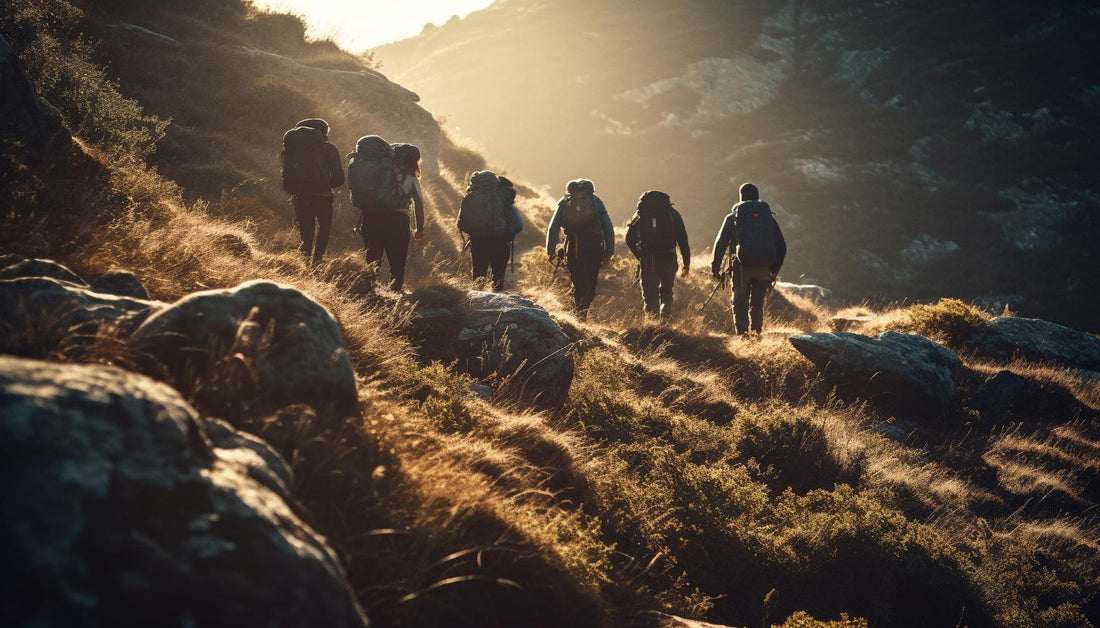
The Ultimate Survival Guide: How to Prepare for Any Disaster
Share
Disasters can strike at any moment—whether it's a natural calamity like an earthquake, hurricane, or wildfire, or a man-made crisis such as a power grid failure or societal unrest. The key to survival is preparedness.
This guide will cover everything you need to know to ensure you and your loved ones can stay safe, stay fed, and stay alive in an emergency. We’ll go over building a survival kit, food and water storage, home preparedness, evacuation planning, and survival skills you need to master.
Step 1: Building a Survival Kit
A well-packed survival kit can mean the difference between life and death. A properly prepared emergency bag should contain essential items for at least 72 hours, but ideally, you should prepare for at least two weeks of self-sufficiency.
1.1 Essential Items for Your Survival Kit
-
Water Supply (1 gallon per person per day)
-
Non-Perishable Food (canned goods, protein bars, freeze-dried meals)
-
First Aid Kit (bandages, antiseptics, pain relievers, prescription meds)
-
Fire Starters (waterproof matches, lighters, magnesium fire starters)
-
Emergency Shelter (tent, tarp, emergency blankets)
-
Multi-Tool & Knife (for repairs, defense, and survival needs)
-
Flashlights & Batteries (hand-crank and solar-powered recommended)
-
Emergency Radio (battery-operated or hand-crank, NOAA weather updates)
-
Personal Documents (ID, insurance, emergency contact list)
-
Cash in Small Bills (ATMs may not work in an emergency)
-
Self-Defense Tools (pepper spray, stun gun, firearm where legally permitted)
1.2 Go-Bag vs. Stay-Home Kit
-
Bug-Out Bag (BOB): A lightweight kit designed for quick evacuation.
-
Bug-In Kit: Supplies to keep you safe at home during extended disasters.
Step 2: Water & Food Storage
2.1 Water Storage & Purification
-
Store at least one gallon per person per day (2-week minimum for families).
-
Use food-grade storage containers and keep them in a cool, dark place.
-
Water purification methods:
-
Boiling (Most Effective)
-
Water Purification Tablets
-
Portable Water Filters (LifeStraw, Berkey, Sawyer Mini)
-
Bleach Treatment (16 drops per gallon, let sit for 30 minutes)
-
2.2 Emergency Food Supply
-
Best Foods for Long-Term Storage:
-
Canned goods (meat, beans, vegetables)
-
Freeze-dried meals (Mountain House, ReadyWise)
-
Rice, pasta, lentils, and grains
-
Nut butters and high-calorie snacks
-
MREs (Meals Ready-to-Eat)
-
-
Food Storage Tips:
-
Keep in a cool, dry, dark place.
-
Rotate your stockpile every 6-12 months.
-
Have manual can openers handy.
-
Step 3: Securing Your Home for Shelter-In-Place Situations
3.1 Fortifying Your Home
-
Reinforce doors and windows against potential intruders.
-
Install security cameras and motion detectors.
-
Use blackout curtains to avoid attention during a crisis.
-
Have alternative power sources (solar panels, generators, battery banks).
3.2 Heating & Cooling Without Electricity
-
Insulate rooms with blankets and heavy curtains in winter.
-
Use solar-powered fans or DIY swamp coolers for heat.
-
Stockpile hand warmers and propane heaters (use safely with ventilation).
Step 4: Evacuation Planning
4.1 When to Evacuate
-
Government-mandated evacuations (hurricanes, wildfires).
-
Widespread power failures (long-term blackouts).
-
Collapse of law and order (looting, riots, civil unrest).
4.2 How to Evacuate Safely
-
Have a pre-planned evacuation route (at least 3 different options).
-
Use paper maps—don’t rely on GPS in a crisis.
-
Have a pre-packed bug-out bag ready for immediate departure.
-
Establish rendezvous points for family members.
-
Carry enough fuel, water, and food for the trip.
Step 5: Essential Survival Skills
5.1 Fire-Starting
-
Learn to start a fire with flint and steel, lighters, or fire starters.
-
Always carry waterproof matches and dry tinder.
-
Understand fire safety to avoid accidents.
5.2 Navigation Without GPS
-
Learn to read a map and compass.
-
Use landmarks and natural indicators (moss on trees, sun movement).
-
Practice night navigation with the North Star.
5.3 First Aid & Medical Knowledge
-
Learn CPR and basic wound treatment.
-
Know how to treat dehydration, hypothermia, burns, and fractures.
-
Keep a first aid manual in your survival kit.
5.4 Self-Defense & Situational Awareness
-
Always be aware of your surroundings and escape routes.
-
Learn basic self-defense moves (Krav Maga, Jiu-Jitsu, or firearms training).
-
Carry defensive tools—pepper spray, baton, or firearm (if legally permitted).
Step 6: Communication & Staying Informed
-
Emergency Radios: Get a battery or hand-crank NOAA radio for updates.
-
Walkie-Talkies: Useful for communication when cell service is down.
-
Emergency Contact List: Keep a hard copy of phone numbers and addresses.
-
Code Words for Family: Establish secret words to confirm identity in emergencies.
Step 7: Long-Term Survival Strategies
7.1 Sustainable Food Sources
-
Gardening: Grow vegetables, herbs, and fruits in small spaces.
-
Hunting & Fishing: Learn basic trapping, fishing, and cleaning techniques.
-
Livestock & Chickens: Small-scale animal husbandry for protein.
7.2 Alternative Energy Sources
-
Solar Panels: Small, portable panels for charging devices.
-
Hand-Crank Generators: Reliable power when batteries run out.
-
Wood Stoves & Rocket Stoves: Efficient cooking without gas or electricity.
Remember this...
Survival isn’t about fear—it’s about preparedness. The more you plan, practice, and prepare, the greater your chances of thriving in any crisis.
Take action today: build your survival kit, learn critical skills, and develop a solid emergency plan.
📌 Get Prepared Now! Check out our pre-packed survival kits designed by experts to keep you safe in any disaster.
